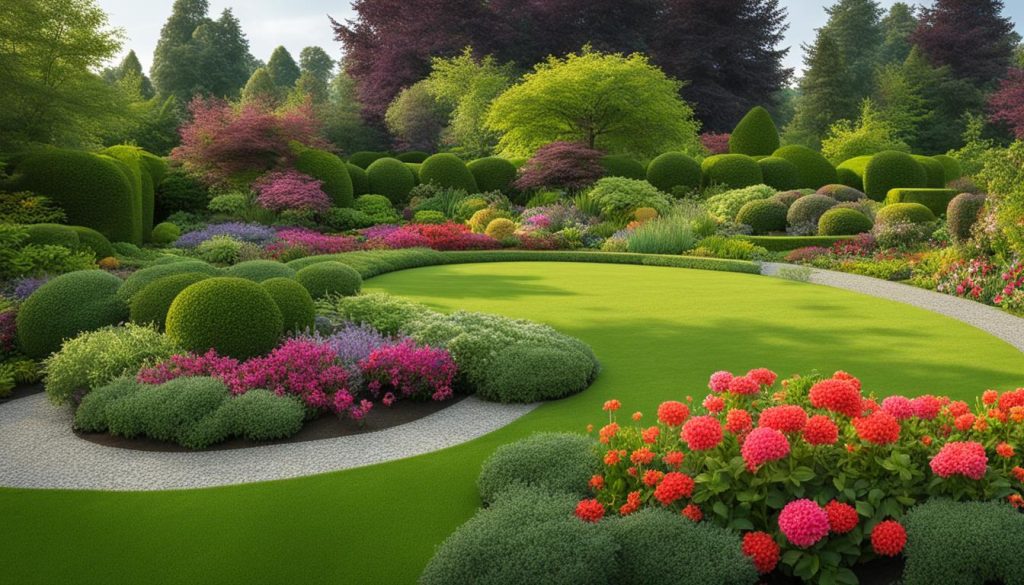As landscaping professionals at Landscaping Near Me, we understand how important it is to have a beautifully landscaped garden that reflects your personality and style.
Garden borders and edging play a significant role in creating a polished outdoor space. Not only do they add aesthetic appeal, but they also provide organization and structure to your garden, allowing you to create different zones for various purposes. Whether you want to highlight certain flowers, separate different areas, or create pathways, garden borders and edging can help achieve your landscaping goals.
In this article, we’ll explore the different types of garden borders and edging materials available, discuss installation methods and maintenance tips, and provide some inspiration for enhancing your garden’s aesthetics. We hope this guide will help you create a stunning and functional outdoor space that you can enjoy year-round.
Key Takeaways
- Garden borders and edging are essential for creating a well-defined and organized outdoor space.
- Different materials can be used for garden borders and edging, each with its unique characteristics and aesthetics.
- Proper installation and maintenance are necessary for garden borders and edging to be effective and long-lasting.
- Garden borders and edging can enhance the overall aesthetics of your garden, providing a polished and visually stunning look.
- Contact Landscaping Near Me for professional landscaping services to transform your garden into an outdoor oasis.
The Role of Garden Borders and Edging
At Landscaping Near Me, we believe that garden borders and edging play a crucial role in garden design. They are not just decorative features but have functional value as well. Garden borders and edging act as physical boundaries that separate different areas of your garden, creating distinct spaces for various purposes. You can use garden borders and edging to:
- Create pathways
- Contain mulch or other ground covers
- Separate flowerbeds from the lawn
- Divide different parts of your garden
Garden borders and edging provide structure and organization to your outdoor space. They help to create an aesthetically pleasing garden design, while also making it easier to maintain and care for your garden.
At Landscaping Near Me, we have years of experience in designing and installing garden borders and edging. We’re here to help you create a beautiful and functional garden space that you can enjoy for years to come.
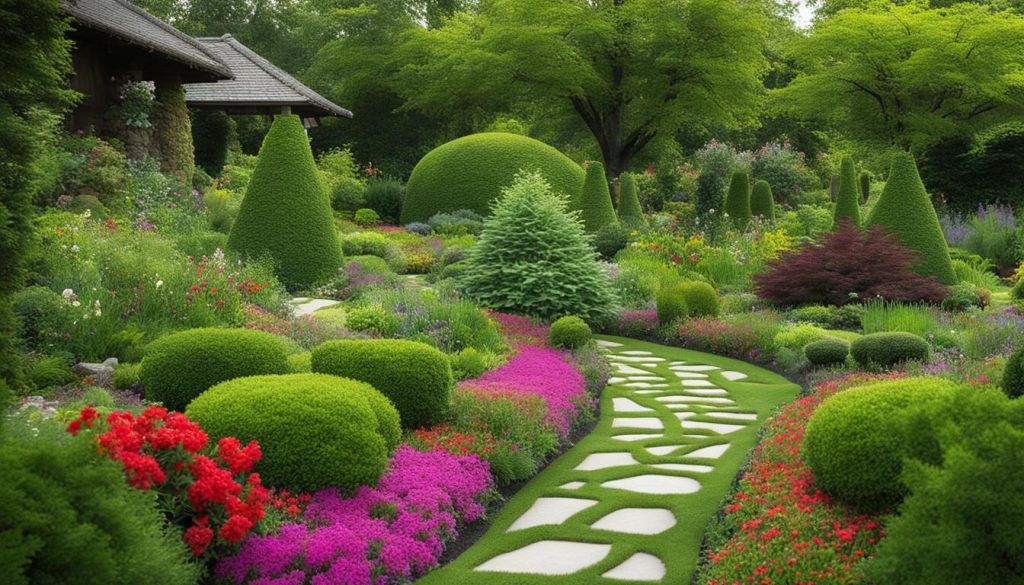
The Benefits of Garden Borders and Edging
In addition to their functional role, garden borders and edging offer several benefits. Here are some of the advantages of incorporating them into your garden design:
| Benefits | Explanation |
|---|---|
| Enhanced aesthetics | Garden borders and edging can add visual interest and appeal to your garden design. You can choose from different materials and styles to create a unique look that complements your outdoor space. |
| Reduced maintenance | Garden borders and edging can help to keep your garden organized and prevent grass and weeds from growing into your flowerbeds. This can reduce the amount of time and effort required to maintain your garden. |
| Improved safety | Garden borders and edging can help to define walkways and prevent tripping hazards. They can also keep mulch or other ground covers contained, reducing the risk of slips and falls. |
Overall, garden borders and edging are an essential component of garden design. They provide both functional and aesthetic value, making it easier to maintain and care for your outdoor space while enhancing its overall beauty.
Types of Garden Borders and Edging
Choosing the right material for your garden borders and edging is crucial to achieving the desired look and functionality. At Landscaping Near Me, we offer a wide selection of landscape materials to suit any style and budget. Here are some options to consider:
| Material | Pros | Cons |
|---|---|---|
| Brick | – Durable and long-lasting – Classic and timeless aesthetic |
– Can be expensive – Requires significant preparation and mixing of mortar |
| Stone | – Natural and rustic look – Easy to install |
– Can be heavy and difficult to move or adjust – Requires occasional re-leveling |
| Wood | – Affordable and versatile – Can be stained or painted to match your garden |
– Can rot or warp over time – May attract pests or fungi |
| Metal | – Sleek and modern look – Resistant to weather and rust |
– Can be expensive – Conducts heat, which can damage plants |
| Plastic | – Lightweight and easy to handle – Inexpensive and comes in various colors and designs |
– May look artificial and cheap – Not as durable as other materials |
Each material has its own advantages and disadvantages, so it’s important to consider factors such as durability, cost, aesthetic appeal, and maintenance requirements before making a final decision. At Landscaping Near Me, we can provide expert advice and guidance on selecting the right garden borders and edging for your specific needs and preferences.
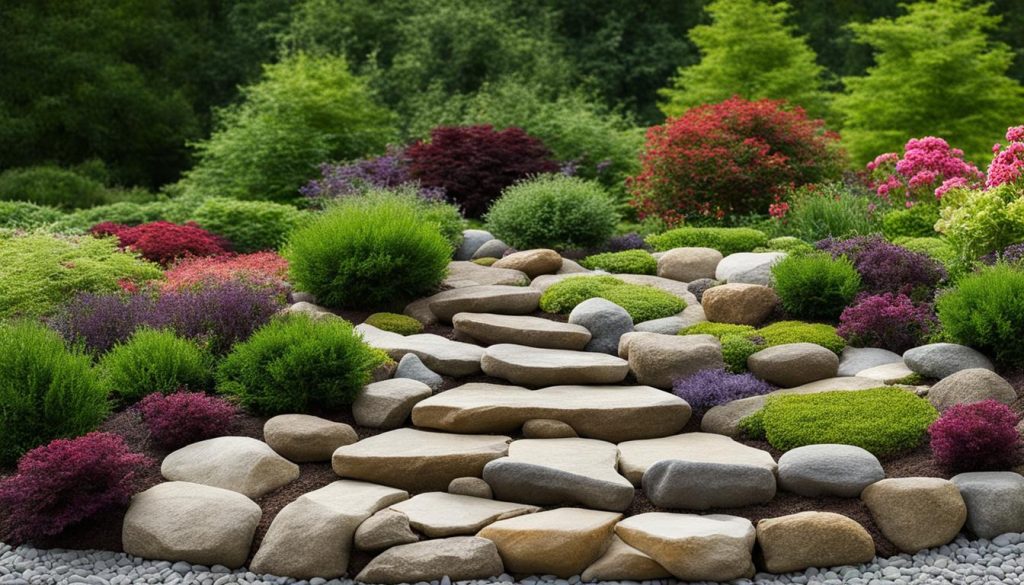
Installing Garden Borders and Edging
At Landscaping Near Me, we provide professional landscaping services, including garden borders and edging installation. However, if you prefer to take the DIY approach, we have some tips to help you achieve a successful installation.
Preparation
The first step is to mark out the area where you want to install the garden borders and edging. Use a garden hose or spray paint to create an outline of the desired shape and size. Remove any grass or debris within the marked area to create a clean foundation for the installation.
Pro Tip: If you plan on using a metal or plastic garden border or edging, you may need to purchase stakes to secure it firmly into the ground.
Leveling
Once you have prepared the area, use a level to ensure that the ground is even. Uneven ground can cause the garden borders and edging to slant or tilt, compromising their effectiveness and appearance.
Installation Methods
There are different methods for installing garden borders and edging, depending on the type of material you use. Below is a basic guide for some of the most common types:
| Garden Border or Edging Material | Installation Method |
|---|---|
| Brick or Stone | Dig a trench that is slightly wider and deeper than the material. Use a level to make sure it is even, and then fill the trench with a layer of gravel for drainage. Add a layer of sand and then place the bricks or stones in the desired pattern. Use a rubber mallet to tap them into place and then fill in any gaps with sand. |
| Wood | Dig a trench and line it with landscaping fabric to prevent weeds from growing. Place the wood edging into the trench and secure it in place with stakes. |
| Metal or Plastic | Dig a shallow trench and stake the edging into place. Use a rubber mallet to tap the edging into the ground and ensure it is level. |
Professional Assistance
If you’re not confident in your DIY skills or prefer to leave the installation to the experts, our landscaping services at Landscaping Near Me can help. Our experienced team can ensure a seamless installation process, creating beautiful and functional garden borders and edging that will enhance your outdoor space for years to come.
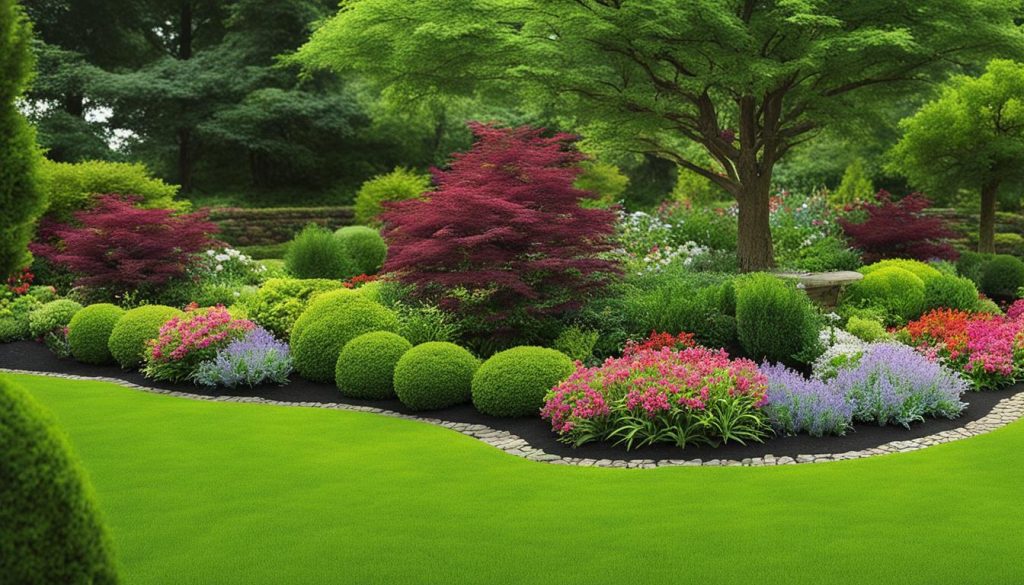
Enhancing Your Garden with Borders and Edging
Creating a visually stunning landscape is easy with the right garden borders and edging ideas. Our experienced team at Landscaping Near Me has curated some innovative design concepts to get you inspired.
Using Decorative Edging Patterns
Adding decorative edging patterns to your garden borders can provide an instant visual impact. Experiment with different designs, such as scalloped, curved, or square edging, to complement your garden’s overall aesthetic. Layering different edging types, such as using bricks and stones together, can also create a unique and eye-catching look.
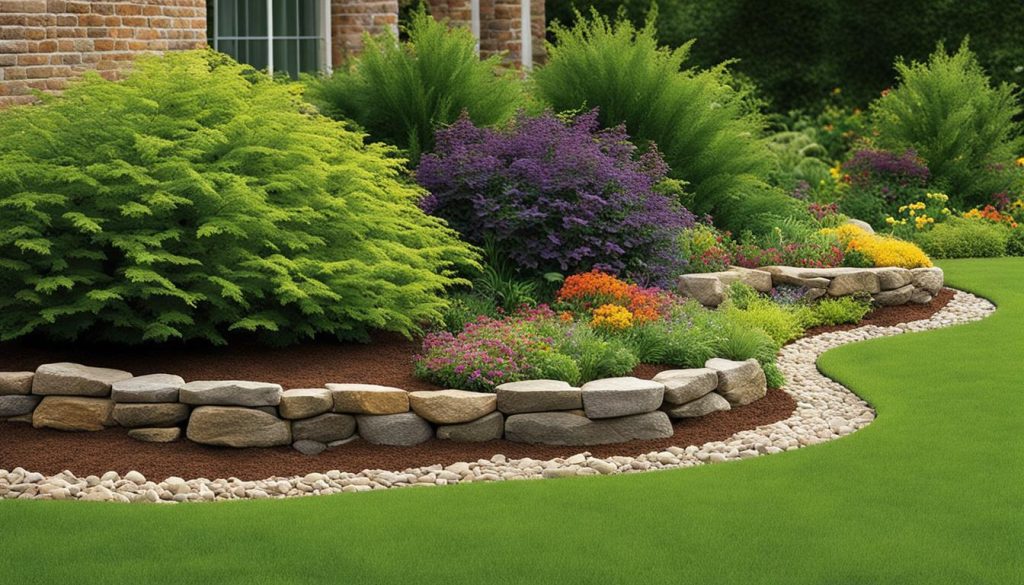
Incorporating Plantings within the Borders
Integrating plantings within your garden borders can add another dimension to your landscape. Consider planting colourful perennials or low-growing annuals along the edge of your borders to create a vibrant and lively impression. Mixing different foliage textures and heights within the borders can also bring depth and interest to your garden design.
Creating Pathways with Edging
Using garden borders and edging to create pathways is not only functional but also adds an attractive design element to your garden. Use contrasting materials, such as bricks and gravel, to highlight the pathway and guide visitors through your garden. You can also complement the pathway with lighting fixtures for an enchanting evening setting.
Enhancing your garden with borders and edging is a simple and effective way to elevate its overall aesthetic. Contact us at Landscaping Near Me to learn more about how we can help you achieve your dream garden.
Maintenance and Care for Garden Borders and Edging
At Landscaping Near Me, we believe that regular maintenance and care for your garden borders and edging is essential. By following some simple tips and tricks, you can keep your garden looking beautiful and well-defined for years to come.
Regular Cleaning
One of the easiest ways to maintain your garden borders and edging is by regularly cleaning them. Use a broom or brush to remove debris and dirt that has accumulated on the surface over time. This will prevent any build-up that can cause discoloration or damage to the materials.
Trimming and Pruning
Regular trimming and pruning of plants within your garden borders can help keep them healthy and looking great. Overgrown plants can damage borders and edging, so be sure to keep them in check. Trimming also helps to maintain the shape and appearance of your garden.
Repairing Damage
If you notice any damage to your garden borders and edging, it is important to repair it as soon as possible. This can prevent further damage and prolong the lifespan of your borders and edging. Use appropriate materials and techniques based on the type of damage to ensure a seamless repair.
Protecting from Weathering
Weathering can cause damage to your garden borders and edging over time. To protect them, apply a sealant or protective coating that can withstand exposure to the elements. Be sure to choose a sealant that is compatible with the material of your borders and edging.
By following these simple landscaping tips, you can ensure that your garden borders and edging remain in excellent condition. For professional assistance with maintenance and care, contact Landscaping Near Me today. See our work, in action!
FAQ
What are the benefits of garden borders and edging?
Garden borders and edging provide aesthetic appeal and functionality by defining and enhancing your garden spaces. They create physical boundaries, separate different areas, and add structure and organization to your outdoor space.
What types of materials can be used for garden borders and edging?
Common options for garden borders and edging materials include brick, stone, wood, metal, and plastic. Each material offers unique characteristics and aesthetics, allowing you to choose the best fit for your landscape.
How do I install garden borders and edging?
Proper installation of garden borders and edging involves step-by-step instructions, including preparation, leveling, and securing methods. If you prefer professional assistance, our landscaping services at Landscaping Near Me can ensure a seamless installation process.
How can garden borders and edging enhance the aesthetics of my garden?
Garden borders and edging not only serve a functional purpose but also elevate the overall beauty of your garden. Innovative ideas and design concepts, such as decorative edging patterns and incorporating plantings within the borders, can create a visually stunning landscape.
How do I maintain and care for garden borders and edging?
Regular maintenance is necessary to ensure the longevity and attractiveness of your garden borders and edging. We provide practical tips and guidance on how to clean, repair, and protect them from weathering and degradation.

